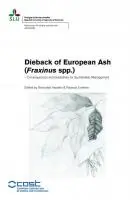
Design, Networks and Strategies

A Guide to Some In Vitro Techniques - Small Fruits

Develpoment of Monitoring Procedures, Rapid Detection Methods and Techniques

Paysages Antiques et Stractures Surales - The use of Geographic Information Systems in the Study of Ancient Landscapes and Features Related to Ancient Land Use

Europäische konzertierte aktion werkstoffe für meerwasserentslazungsanlagen

Handbook of Methods Used in Rhizosphere Research
- Pages: 536
- Author(s): J. Luster, R. Finlay
- Publisher(s): WSL
- ISBN/ISSN: 978-3-905621-35-8
The handbook offers a unique collection of proven methods covering a wide range of areas of rhizosphere research.

European Ash – Consequences and Guidelines for Sustainable Management
- Pages: 320
- Author(s): Vasaitis, R., Enderle, R. (Eds.)
- Publisher(s): SLU Service/Repro, Uppsala, 2017
- Download from external website
- Download PDF
- ISBN/ISSN: 978-91-576-8696-1
Since mid-1990s, severe dieback of ash started to spread over most European countries. This emerging disease resulted in massive tree mortality and threatens the existence of ash trees over the continent. The causal agent of the disease is
Hymenoscyphus fraxineus
, an alien and invasive fungus that originates from Far East Asia, and most likely entered Europe with imported ash trees.

Meteorology Applied to Urban Air Pollution Problems - Final Report COST Action 715
- Pages: 276 pages
- Author(s): B. Fisher, S. Joffre, J. Kukkonen, M. Piringer, M. Rotach, M. Schatzmann
- ISBN/ISSN: 978-954-9526-30-1
This report describes the conclusions of the COST 715 programme on ‘meteorology applied to urban air pollution problems’. One of the key aims of European environmental policy is to improve air quality in European cities and urban areas. Given a certain level of emission and that adverse air quality conditions are mainly driven by specific meteorological conditions, one should be concerned whether urban meteorology is being treated properly in regulatory air quality assessments. This concern introduces real practical problems for the meteorological community. For example, some of the meteorological variables in regulatory air quality models are quantities that are not routinely measured, such as the surface flux parameters, or the mixing layer depth. COST 715 has tackled these problems. It has developed and reviewed the latest scientific approaches to describing the urban boundary layer, which has a complex structure involving wide variations in time and space.
